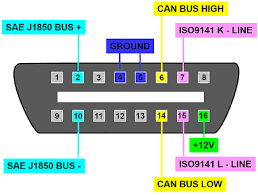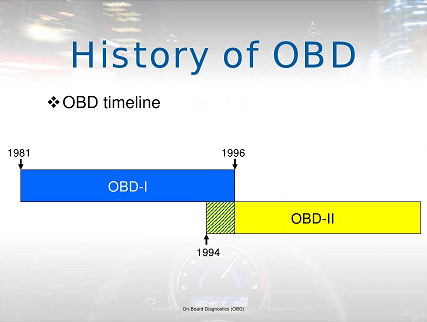The history of on-board diagnostics goes back to the 1960s. Several organizations set the groundwork for the standard, including the California Air Resources Board (CARB), the Society of Automotive Engineers (SAE), the International Organization for Standardization (ISO) and the Environmental Protection Agency (EPA). It’s important to note that before standardization, manufacturers were creating their own systems. The tools from each manufacturer (and sometimes models from the same manufacturer) had their own connector type, electronic interface requirements. They also used their own custom codes for reporting problems.
VEHICLES FROM 1981 TO 1996 USE OBD-I
OBD-I refers to the first generation of on-board diagnostic systems, which featured proprietary connectors, hardware interfaces, and protocols. If you were a mechanic who wanted diagnostic information back then, you needed different equipment for each vehicle make, or a special OBD-I scan tool that supported multiple protocols and had adapters for each make. Regardless of which route you chose, you needed a lot of tools to work around the many OBD systems.
VEHICLES FROM 1994 TO PRESENT USE OBD-II
OBD-II is a more standardized version of this system, making it easy to diagnose issues across different vehicles. Before The standardized OBD-II system eliminates the necessity for multiple adapters and scanner accessories. Now most OBD-II systems are nearly the same, but there are five different protocols with slight variations. The system was standardized with specifications from the Society of Automotive Engineers (SAE) to comply with California Air Resources Board (CARB) regulations.

These are the five OBD-II protocols:
